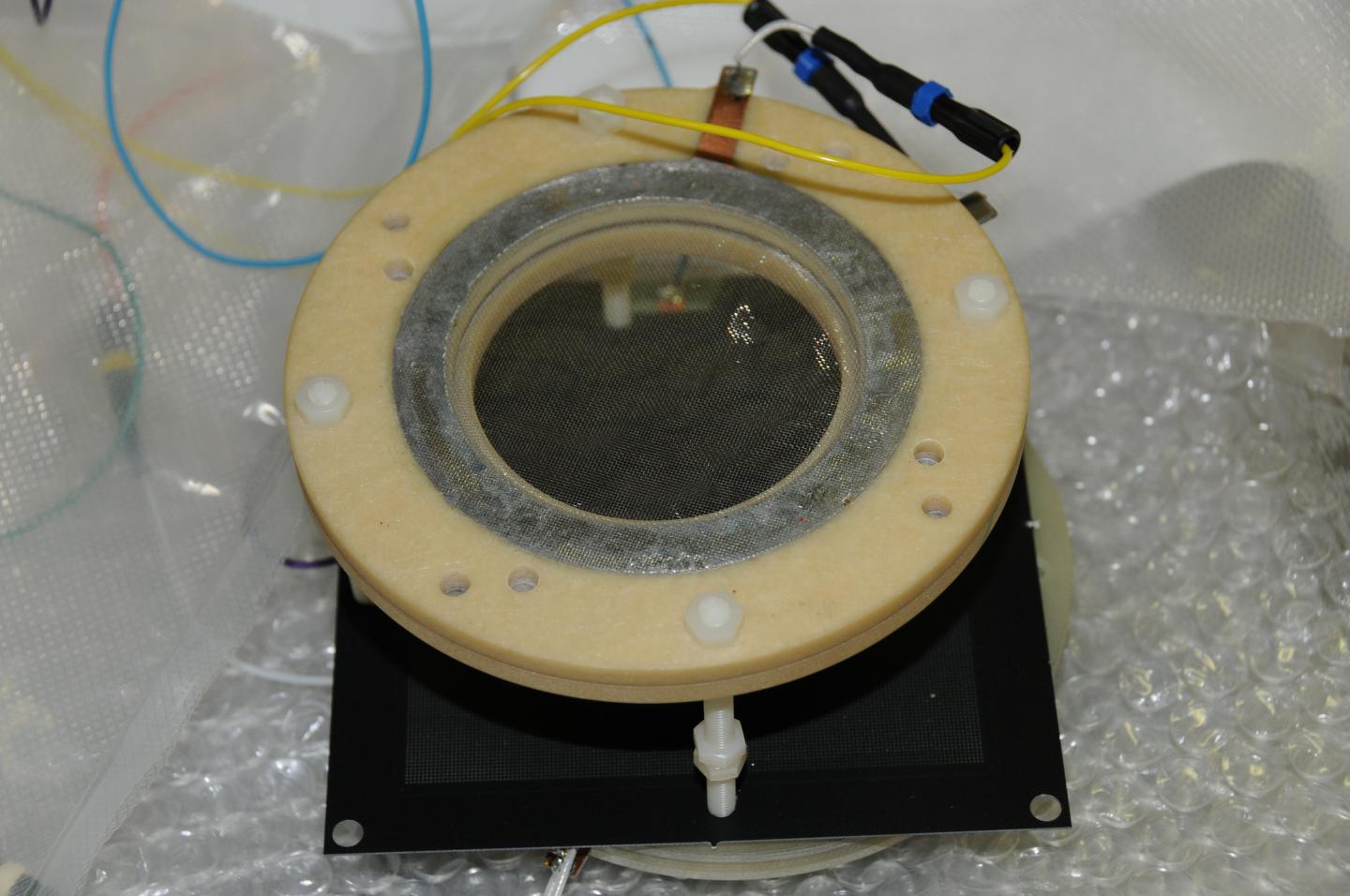The “wall-less” GEM-type structure is capable of stable operation and high gas gain in humid ambient air and in photosensitive vapours including, TMAE. It operates similarly to classical GEMs, namely avalanche multiplication in the region of a strong electric field, located between aligned holes of the plates. However, since these multiplication regions (in contrast to ordinary GEMs, TGEMS or RETGEMs) do not have any walls, there is no leakage current due to the humidity or other liquid layer (for example TMAE) adsorbed on the hole surface. Spacers are located in special areas and far away from the holes. They have special shapes that fully prevent any leakage current. Some materials commonly used in RETGEM/TGEM construction, for example PCB (or G-10), adsorb water, thus their resistivity may change with time and this may affect the stability of the detector operation. A special protective coating should be applied to such materials to prevent this. An important feature of this structure is that it can operate at gas gains much higher than GEM, TGEM or RETGEM. If necessary, the structure can also be exploited in cascaded mode or be combined with another detector.
Documentation
- G. Charpak et al., IEEE Nucl Sci., 55, 1657, 2008
- G. Charpak, JINST 3 P02006, 2008
- G. Charpak et al., arXiv:1002.4732
Advantages & Applications
Possible applications
The developed structure can be used as a gas electron multiplier in a cheap detector of Rn, operating in on line mode (such a device can be used for earthquake prediction and as a very sensitive detector of dangerous gases). Compared to ionization chambers, the structure is operating in gas avalanche mode offering much better signal to noise ratios. It can detect Rn decay as well as its progenies 214 Po and 218 Po. In this detector the negatively charged electrode (drift electrode) can be easily replaced, which allows starting new measurements almost immediately. By tuning the drift field between the drift electrode and the structure, one can detect either Rn+ or Rn only.
Advantages
The structure is produced by the same technology as TGEM and RETGEMs. However, due to the feature of its design (aligned holes without walls), the leakage current is fully eliminated. Due to the absence of the interference from the hole walls, at least ten times higher gas gains can be achieved compared to TGEM and RETGEM, and up to 100 times more compared to GEM and MICROMEGAS. If required, the structure can be produced with hole size and thickness close to classical GEMs.
Limitation
The holes need to be aligned and the distance between plates equal or close to hole diameter, which can be complicated in the case of very small holes and pitch. The same applies to the spacers. However, in some cases the anode can be without holes, simplifying the production.

